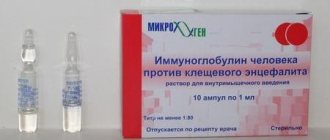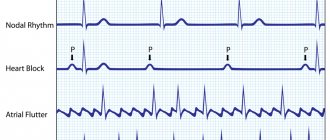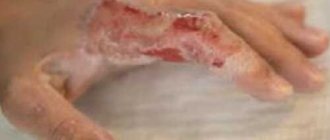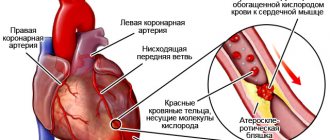Burns are the most common traumatic eye injury. They occur when exposed to thermal, radiation and chemical factors.
Eye burns damage the skin of the eyelids, conjunctiva, cornea, and lacrimal ducts. In severe cases, even the posterior parts of the eyeball are affected.
The nature and extent of the burn depend on the characteristics of the traumatic agent, i.e. its temperature, concentration, chemical composition and structure. In addition, the severity of the burn is influenced by the health of the visual organs, the immune system and the reactivity of the body as a whole. Timely and high-quality provision of emergency medical care helps reduce the severity of the burn process. The area and depth of the lesion affects the course of the recovery period.
More than 70% of eye burns in industrial areas are due to occupational injuries; the remaining burn injuries are of a domestic nature.
Among chemical eye injuries, the most common are burns from alkalis, acids and lime. Thermal burns occur mainly from contact with the eyes of boiling liquid, steam, hot metal particles, flames and other burning factors.
Burns caused by an explosion of chemical and/or thermal substances, accompanied by ionizing radiation in combination with mechanical damage to the eye, are considered a combined injury. Decreased visual acuity is directly related to the severity of the burn.
Causes of getting a burn
There are several main reasons that can provoke eye damage. The causes are classified depending on the type of substance and principle of action:
- thermal burns. Mostly appear due to ultraviolet radiation or the use of a welding machine, grinder and other tools for cutting and heating metal. Thermal burn of the eyes, first aid is carried out in the first minutes of injury. Eye burns with a quartz lamp are treated for a long time. All of the above reasons differ in the influence of the temperature factor. The damage occurs mostly in the eyelid, since a person reflexively closes his eyes in the face of any danger. Any contact with high temperature may result in a burn;
- Chemical burns are caused by the ingress of acidic substances or alkali. Acid penetration in most cases has a more favorable prognosis, since the substance is not able to penetrate inside. A scab appears and a large part of the eye is affected, but recovery is faster and easier than with alkali, which tends to penetrate into the eye. Accordingly, alkali affects the eye not only from the outside, but also from the inside. In medical practice, most cases of chemical damage due to acid or alcohol are recorded.
When these negative factors penetrate, a burn appears on the cornea, retina and mucous membrane. Characteristic symptoms of burns are blurred vision and inflammation in the eyelid. A burn is a serious injury to the organs of vision, which can provoke even more serious complications, so treatment of an eye burn is necessary urgently.
How does it manifest?
Traumatologists and ophthalmologists identify the following most characteristic clinical symptoms that appear in a victim with an eye burn:
- Pain syndrome;
- Irritation of the mucous membrane;
- Hyperemia and swelling of the eyelid area;
- Swelling of the mucous membranes, redness;
- Cloudiness of the cornea;
- The appearance of photophobia;
- Decreased visual function;
- Intense lacrimation;
- Increased intraocular pressure;
- Blepharospasms;
- Sensation of the presence of a foreign body;
- Changing the field of view;
- Inflammatory processes localized in the area of the choroid.
Symptoms often become fully apparent several hours after the injury. With burn lesions of the eyelids, they turn red, swell, and fluid-filled blisters appear on the skin. Patients complain of severe pain, itching, and visual disturbances.
How vividly the symptoms listed above appear depends on the extent of the damage and the cause of the injury. It is rarely possible to correctly differentiate a burn on your own, therefore, even if you identify the very first clinical signs, hurry up and consult a doctor!
What is the danger?
Any burn injuries to the eyes are very dangerous and traumatic. In case of severe injury or if the victim was not provided with competent medical care in a timely manner, there is a high probability of developing the following complications and adverse consequences:
- Scar formations localized in the area of the eye tissue;
- Cataract;
- Glaucoma;
- Dry eye syndrome;
- Blockage of the lacrimal ducts;
- Cloudiness of the cornea;
- Inflammatory processes occurring in a chronic form;
- Deterioration of vision.
Among the most dangerous complications are necrosis affecting the eyeball, damage to the macula of the retina, visual impairment, even complete blindness. Therefore, it is so important to take timely measures and provide the victim with the necessary, professional treatment!
About diagnostics
Diagnosis of this injury begins with examination of the victim, study of symptoms, identification of the causes of injury, and analysis of the results of the collected anamnesis. In order to determine the depth and severity of the lesion and identify possible associated injuries, the following diagnostic studies may be recommended for patients:
- Visometry;
- Ophthalmoscopy;
- Biomicroscopy.
Based on the diagnostic results obtained, the doctor will be able to prescribe the most effective treatment for the patient for a particular clinical case.
First aid for eye burns
Eye burns first aid can be of major importance in the further treatment of a person. The severity of eye damage and possible recovery depend on what you do after the burn occurs.
The first priority when any substances come into contact is rinsing. It is necessary to start washing with minimal time, this will improve the likelihood of a favorable result. It is advisable to rinse with saline solution, which is available in every pharmacy. If not available, it can be replaced with a solution of potassium permanganate with an extremely low dosage. In extreme cases, water will do.
For chemical eye burns, first aid should be provided for 10–20 minutes until the ambulance arrives. The procedure continues until the substance is completely washed out. Antiseptics are used to reduce the severity of symptoms and speed up the healing of the eye. The eyes should be treated with drops, and the adjacent skin should be anointed with antiseptic cream. A bandage is placed over the affected eye; it can be purchased or made with sterile cotton wool and gauze.
Thermal eye burn first aid involves another procedure that has a high risk of danger - eliminating burning substances. If they are left undisturbed, the lesion will spread further and there is a risk of damaging the integrity of the eye shell with sharp edges. First you need to try rinsing your eye under a little pressure of water. After eliminating the substance, an antiseptic ointment should be applied, the most common is tetracycline.
Thermal burn of the eyes, first aid at these stages is completed. After eliminating the irritant and relieving the symptoms, you need to consult an ophthalmologist yourself or call an ambulance.
Chemical eye burns first aid that will help with the treatment of eye burns:
- do not rub your eyes, as this will increase the spread of the substance;
- chemical burns to the eyes, first aid necessarily involves applying a sterile bandage;
- if radiation burns are detected (ultraviolet, welding), the symptoms have a delayed course and appear only after 2–3 hours, it is necessary to consult a doctor for help during this time;
- patients complain of severe severity; to relieve symptoms, it is worth purchasing pain-relieving drops. Inocaine is more often used for instillation, and Hydrocortisone and Dexamethasone are popular for use with ointments;
- As exposure to the harmful substance continues, the quality of vision worsens. When affected by alkali, the deep layers of the eye are affected, therefore the condition is the most dangerous.
Symptoms
The degree of damage to the optic nerve determines the main symptoms. In many cases, the damage only affects the mucous membrane. However, in some cases, deep tissues are negatively affected. If an eye burn manifests itself on the retina, then disruptions in circulatory and metabolic processes are observed. Active tissue breakdown provokes intoxication.
Injury to a minor degree of manifestation of consequences is characterized by the following signs:
- hyperemia of the eyelids, as well as the epithelium adjacent to this area;
- acquisition of a red tint to the cornea;
- swelling of the mucous membranes;
- sensation of pain of varying degrees of intensity;
- itching and burning;
- hypersensitivity to light exposure. In this case, light burns of the eyes occur.
In more complex cases, the damage manifests itself with more severe symptoms. Mild symptoms include the following:
- the cornea begins to become cloudy;
- blood vessels become inflamed;
- deviations in the level of eye pressure are observed;
- blepharospasm and lacrimation are present;
- the patient complains of discomfort and the presence of foreign objects under the eyelid.
In extremely severe cases, for example, when the retina is damaged by laser beams, the structure of the eye is significantly damaged. The sclera is exposed, and necrotic processes begin in the tissues of the conjunctiva. This leads to ulcerative formations, which then begin to scar.
A common result of retinal damage is vision loss. This violation is due to the degree of exposure to the factor leading to damage. However, the intensity of the development of edema also matters. In such a serious condition, prompt qualified medical care is required. Otherwise, the risks of failure to fully restore visual function increase.
Treatment of a chemical burn
Treatment of a chemical burn to the eye involves several basic recovery methods. The most accessible therapy is medication. For severe cases, surgery cannot be avoided, otherwise the risk of vision loss or incomplete restoration outweighs it.
A chemical burn to the eye and its treatment involves several main stages.
Washing
Eliminating the agent that damages the area of the eye. The easiest way to do this is by rinsing, but if this is not possible, you should blink if it is not accompanied by pain. If there is a pharmacy nearby, an anesthetic is used before washing, which will reduce pain, eliminate blepharospasm and simplify the procedure for the person.
Treatment of inflammation
Stopping the inflammatory course is the most important procedure. An eye burn and its treatment largely depend on the speed of response to inflammatory processes. Mediators that were released during the lesion provoke tissue necrosis. Additionally, they involve other components of inflammation. Because of this condition, the speed of eye recovery is greatly reduced, and the risk of ulcerative lesions and retinal perforation increases.
Steroid substances are used to control inflammatory processes. For an auxiliary effect in the treatment of chemical burns of the eyes, ascorbic acid can be used, which is useful due to changes in calcium metabolism in the eye.
Acetylcysteine is able to inhibit collagenolysis, which blocks the formation of ulcers.
Speeding up eye recovery
Treatment of a chemical burn of the cornea largely depends on the speed of the body’s recovery abilities. The epithelialization process will not start until the chemicals are completely eliminated.
Immediately after a harmful agent enters the eye, there is a reactive increase in tear production. Over time, treatment of a chemical burn to the eye will require replacing organic tears with synthetic ones due to a decrease in its synthesis, which will moisturize the surface and accelerate tissue healing.
Chemical burns of the eye are treated at home and almost always use ascorbic acid, as it allows you to recreate the normal structure and level of collagen. This leads to faster cell regeneration.
In some cases, bandage lenses are prescribed, which will prevent the influence of ultraviolet radiation on the eye until the wound is completely healed.
Preventive actions
A burn of the eye mucosa is difficult to treat - the absence of epithelium on the cornea leads to a decrease in the protective functions of the organs and a high risk of infection. For prophylaxis, antibiotics may be used at the beginning of treatment.
Modern medicine has developed cyanoacrylate glue, which is intended for treating eyes with small but deep damage. Welding eye burns and their treatment largely depend on the use of glue.
Monitoring normal intraocular pressure during eye burns
Treatment of a burn to the eyelid eliminates the need to worry about the internal state of the eye, but in other cases it is necessary to check the level of pressure and relieve it. Most clinical cases are faced with excess pressure not only at the beginning of the pathology, but also later in the course, during recovery. Doctors mainly recommend the use of blockers that reduce the rate of synthesis of intraocular fluid.
If treatment of an eye burn with local medications does not bring the expected effect, anti-glaucoma surgical interventions are indicated. High efficiency is observed in shunt and valve devices.
The duration of treatment is determined by the doctor.
Relieving pain from eye burns
Severe chemical types of burns are characterized by pain with high intensity and duration. Cycloplegics are often used to control spasm in the ciliary mouse. At the stage of damage, there is a high intensity of pain, so drugs with an analgesic effect may be useful.
Treatment
Instillation of cytoplegic drugs (atropine, scopolamine) into the patient. These drugs reduce pain and reduce the risk of adhesions.
Eye ointments and drops with an antibacterial effect will help avoid infection of the burn wound. These include Tetracycline and Levomycetin. Dry cornea often accompanies an eye burn. In these cases, it is necessary to use tear fluid substitutes.
The patient is given antioxidants by injection. With their help, the process of corneal restoration is significantly accelerated. It is also necessary to use eye gels to restore the cornea.
As a result of the injury, intraocular pressure very often increases. To reduce it, experts recommend the use of local antihypertensive drugs (Betaxopol, Dorzolamide).
A cold compress is effective in combating sunburn. It reduces pain and prevents the development of swelling. Ophthalmologists use glucocorticoids for severe eye injuries (Dexamethasone, Betamethasone).
During the rehabilitation period, the patient must undergo physical therapy procedures.
Surgery is necessary in severe cases of eye damage. If a patient has a 4th degree chemical burn, then there is a need to use corneal paracentesis. During the operation, areas of necrosis are removed. Surgery is also used to remove scar formations on the cornea.
Burn of the eye mucosa after eyelash extensions treatment
Chemical burn to the eye, treatment after eyelash extensions, treatment involves a procedure for eliminating the harmful substance. For this task, a conscientious specialist always has a first aid kit, and it contains sodium chloride in a dosage of 0.9%. This solution should be used to treat the eyes to eliminate the harmful agent. In the absence of this substance, you can use an analogue - potassium permanganate. And a chemical burn to the cornea of the eye is also possible, the treatment of which will take quite a long time.
When the ambulance arrives, the patient is injected with painkillers directly into the conjunctiva. After examining the eye, it becomes obvious whether harmful substances have been completely removed or whether particles still remain. Removal is carried out if necessary.
In case of a burn to the mucous membrane of the eye after eyelash extensions, treatment should be selected by doctors; home use of therapeutic drugs will probably be sufficient, but in severe cases, hospital treatment will be required.
Help for burns with ammonia
Treatment of an eye burn with ammonia implies the need for emergency removal of alkali from the eye. If the substance comes into contact with the skin, remove it and rinse all areas of the body with water. Achievement of the desired result will be indicated by a decrease in pain, accordingly, aggravation no longer occurs, ammonia no longer corrodes the tissue.
The next task is to completely eliminate the negative effect. To do this, apply gauze bandages treated with vinegar or citric acid to all affected areas except the eyes.
Treatment of an eye burn with ammonia involves the use of painkillers, since the alkali causes severe pain. Popular drugs for pain relief are Ketoropak, Nurofen, Parametamol.
Burn degrees
Taking into account the severity of the injury, there are 4 degrees of chemical eye burns. Each of them has its own characteristics:
| Degrees of chemical eye burns | Signs, chances of maintaining vision |
| Light | Hyperemia of the conjunctiva and eyelids develops. There are erosions of the cornea and swelling of the epithelium. The patient can count on complete restoration of the affected organ of vision. |
| Average | In addition to hyperemia, clouding of the cornea and the appearance of small bubbles are observed. At this stage, there is still hope for recovery. |
| Heavy | Most of the eyeball is affected. There are necrotic changes in the conjunctiva and skin of the eyelids. The cornea loses its transparency. Iridocyclitis or cataracts often develop, and a scab covers the conjunctiva. |
| Particularly heavy | All eye tissues are damaged. Carbonization of the sclera and deep necrosis are detected. The victim is diagnosed with perforation and total opacification of the cornea, damage to the lens, vitreous body, secondary glaucoma, and uveitis. The outcome is most often unfavorable. |
In addition to the eyeballs, the chemical can affect the skin and cause the appearance of a large number of small blisters on the surface of the epidermis.
Treatment of thermal burns
The primary task before the arrival of doctors is to eliminate the damaging effect. Then you should cool the eye. There should be no problems with eliminating a weld or other hot element, but for cooling it is worth using the following algorithm:
- A bandage is applied to the fingers and they are wrapped with it.
- The person opens his eyelids as much as possible.
- To cool, you need to turn on a small water pressure from 12 to 18 ° C and keep your eye on for 20 minutes.
An alternative for refrigeration is any frozen or chilled item. You can simply fill a container with water and apply it to the organ. The fastest way to cool the organ is by immersing your entire face in a container of cold water. Underwater you need to blink sometimes. Plain cotton wool will also help cool the eye; you need to wet it and move it from the temple to the eyelid, then move the nose using smooth movements (do the same with a piece of ice).
When the preparatory procedures are completed for a burn of the cornea of the eye, treatment is selected with drops with an antiseptic effect, for example, Levomycetin, Albucid. The damaged eye is covered with a napkin and an analgesic tablet can be taken.
It is necessary to contact a specialist if during the day:
- pain is present or intensifies;
- there is a feeling that there is a foreign object in the eye;
- other symptoms are noticeable that indicate infection in the eye: swelling, hyperemia, mucus secretion;
- the quality of visual function is reduced.
Treatment methods
Treatment for an eye burn largely depends on the severity and depth of the injury. For minor, superficial injuries, drug therapy methods are used. Patients are prescribed ophthalmic antibiotic drugs (Tsipromed, Tobramycin, Ciprofloxacin), drops with anti-inflammatory properties (for example, Dexamethasone, Dexapos).
If the victim suffers from excruciating, severe pain, he may be recommended analgesics, which are used in the form of drops. Such drugs as Dicaine and Leocaine provide a good analgesic effect. They just need to be used in strict accordance with the scheme developed by the doctor, since otherwise there may be side effects such as irritation and slowdown of the healing process.
Drug treatment includes a course of vitamin therapy, antibiotic therapy, and the use of drugs that promote detoxification of the body.
Severe burns affecting the retina require surgical intervention. During an ophthalmological operation, a specialist removes necrotic tissue areas as necessary, performs a corneal and conjunctival transplant, and eyelid surgery. Surgical treatment allows you to eliminate cosmetic defects, restore and normalize visual function.
Welding eye burn treatment
Burns to the cornea of the eye caused by welding are especially dangerous to treat due to exposure to rays of 280–300 nm, which are able to penetrate the body without any obstacles. This phototrauma should be a compelling argument for contacting a doctor, who will assess the level of damage to the eye.
Before contacting a doctor, it is necessary to relieve the symptoms:
- Sunglasses are put on the eyes, the amount of light in the room is limited by means of dark curtains. Light is replaced by night lamps;
- anti-inflammatory drugs with an analgesic effect are used;
- natural tear preparations are instilled.
Protecting your eyesight from strain is especially important in the first 24 hours after the injury. During this period, photophobia is most pronounced and blepharospasm is very noticeable. At the same time, wearing bandages somewhat slows down the restoration of vision, so wearing them is not recommended.
Burns of the cornea of the eye by welding are effectively treated with painkillers: Nimesil, Nurofen, Diclofenac. The method of use makes no difference. If the drug is in tablets, it should be taken 1 piece at a time. 2–3 times a day. Most effective after eating. Eye burns caused by welding are treated symptomatically for 3 days.
Treatment of eye burns from welding often involves the use of natural tear medications, which accelerate the epithelization of the eye and prevent the onset of dryness. It is necessary to instill the drugs in 1-2 drops at regular intervals of 2 hours.
Treatment is selected by an ophthalmologist. Predominantly prescribed:
- antibiotics in the form of drops prevent the occurrence of an inflammatory reaction due to microbes;
- anesthetic solutions, Dicaine or Lidocaine are suitable for topical use;
- novocaine blockades of the perivasal type - the technique is used only in the hospital;
- burn of the cornea of the eye, treatment with drops involves the use of drugs to dilate the pupil.
Folk remedies are highly effective for burns, so at home you can supplement therapy with homemade recipes.
Welding eye burn treatment with folk remedies:
- Raw potatoes have beneficial effects. It is necessary to cut a regular-sized potato in half and apply the cut to the eyelids. The pain will go away gradually and if the potato is quickly removed, the pain will return. To normalize the condition, you should hold the vegetable for 2 hours. For easier use, you can prepare a paste and put it under the bandage.
- Ultraviolet eye burns are often treated with tea leaves. To treat eye burns with ultraviolet radiation, it is recommended to brew 2 sachets in boiling water and then apply them to the eyelids. The advantage of this method is the quick effect, it only takes 10 minutes, the disadvantage is that it stains the skin. You can replace the bags with tea leaves wrapped in gauze.
Diagnostics
During diagnostic procedures, the doctor assesses the degree of eye damage and the characteristics of the complications that have arisen. The patient undergoes:
- Standard visual acuity test.
- Scanning the eyeball using a biomicroscopic method.
- Carrying out a fluorescent test. The purpose of such an examination is to assess the parameters of epithelial defects.
- Ultrasound scanning of the organ of vision and orbits.
- An optical tomography technique, during which the structure is examined, possible clouding of the cornea is identified.
- Electrophysiological tests, as a result of which information is obtained about the degree of deviations in the retina. The specialist determines the functionality of perception of light pulses. At the same time, the fact of damage to the optic nerve is identified.
If the patient has undergone corneal membrane transplantation, he is prescribed an immunological profile study. The specialist identifies manifestations of rejection and the possibility of correction.
Burn from UV lamp
Treatment of eye burns with an ultraviolet lamp involves the use of Docaine drops and Vaseline. And also treatment of an eye burn with an ultraviolet lamp involves the use of a weak solution of novocaine. Treatment of a burn of the cornea by ultraviolet radiation at first requires instillation of medications every 10–15 minutes.
A burn to the cornea of the eye caused by ultraviolet radiation is recommended to be treated by instilling a disinfectant into the eyes. Cold lotions, which are made from herbal infusions of string, calendula and chamomile, have beneficial properties.
What drops to use
After providing first aid to a victim with an eye burn, he must be sent to a medical facility. Based on the examination and additional examination, the ophthalmologist prescribes medications. Treatment of an eye burn involves the use of the following means:
- drops and ointments with antibacterial action - it is advisable to use Tetracycline or Levomycetin;
- drops with a regeneration effect - Dexpanthenol or Dialysate;
- anti-inflammatory drops - Dexamethasone or Dexapos;
- analgesics - doctors often prefer Alcaine or Dicaine 0.3%;
- medications of the glucocorticosteroid group - Maxitrol or Betamethasone;
- antihypertensive medications – Dorzolamide.
If oil damage occurs, physiotherapeutic procedures and eyelid massage may be prescribed. Surgery is prescribed for damage caused by solid particles, in case of a burn during welding, when the patient’s serious condition is diagnosed. The operation is performed through plastic restoration of the conjunctival membrane, corneal transplantation or plastic surgery of the eyelids.
Causes and damaging substances
In ophthalmology, of all eye herbs, 5 to 15% are burns. Up to 75% of cases occur in industries, the remaining 25% in everyday situations.
Over 40% of chemical burns occur due to various alkalis getting into the eyes. Among them we can highlight such caustic compounds as ammonia, slaked lime, caustic potassium, ethyl alcohol, caustic soda.
About 10% of cases of such injuries occur due to interaction with concentrated acids, such as hydrochloric, sulfuric or acetic acid. Other accidents include careless handling of construction varnishes and paints, household aerosols, herbicides, insecticides, and calcium carbide.
There have been cases of people going to the clinic after mistakenly instilling solutions not intended for this purpose (ear drops or some alcohol tinctures) into the fundus of the eye.
Reference Information! Some burns can occur due to the use of poor quality mascara or as a result of interaction with poisonous plants (the most common culprit of eye injuries is the hogweed flower). In self-defense, you can also harm your eyes, for example, when using gas pistols and spray cans.
With alkaline exposure to the eyes, colliquation necrosis develops, manifested in the form of a hydrolytic effect on cell membranes, causing cell death and enzymatic destruction of tissue. Accurate information about the severity of the damage can only be obtained after 48–72 hours.
Acid that comes into contact with the eye causes coagulative necrosis, which is manifested by the denaturation of cellular proteins and the appearance of a stupor. These pathological changes can be mild and sometimes completely absent. Next, inflammation appears due to a toxic reaction and the addition of a secondary infection.
Risk factors
If safety rules are violated or as a result of an accident, dangerous reagents penetrate into the eye, cause the death of the conjunctiva and gradually penetrate deeper into the eyeball. Injury can occur at work, at home, and even in a beauty salon after unsuccessful eyelash extensions. At risk are people working:
- builders;
- pharmacists;
- mechanics;
- laboratory assistants.
Accidents occur during chemical experiments and in everyday life due to the careless use of lime, ammonia, and bleach. Incorrect actions by a cosmetologist can lead to synthetic glue getting into the eye during eyelash extensions. Symptoms of an unpleasant incident are:
- painful sensations;
- swelling of the eyelids;
- redness and foreign body sensation;
- copious tears.
The tendency to drink alcohol increases the possibility of burns. Alcohol makes a person irresponsible and forces them to neglect safety rules when working with hazardous substances .
Eye burns from chemicals
Injuries to the visual organ caused by contact with active chemicals are considered severe. They cause a burn to the cornea and are difficult to cure.
There are five degrees of severity of this type of eye burns. If the first and second are of moderate severity, since damage occurs to the cornea and tissues located near it, then the rest are severe, because they can lead to complete blindness and loss of the organ itself.
Chemical burns can be caused by certain substances with active ingredients. The most dangerous is considered to be contact with alkali, which aggressively affects tissues and causes large wounds, since after contact it actively expands its boundaries.
The peculiarity of acid is that this substance has a good ability to coagulate, so there is a chance to avoid deep injuries. But it should also be remembered that nitric acid and a number of industrial acids are extremely dangerous and can cause irreversible damage.
In everyday life, burns can also occur if you handle alcohol or hydrogen peroxide carelessly.
First aid must be urgent. The first thing to do is to rinse your eyes generously with water for a long time. If we know exactly what caused the burn, then we do this:
- in case of contact with alkali, wash with a two percent solution of boric acid;
- with acid - non-concentrated soda solution.
Treatment of chemical burns should be carried out strictly by a specialist. It is the doctor who will prescribe the necessary drug, these can be drops or special ointments. In case of severe burns, surgical intervention is resorted to, since it requires prompt removal of dead tissue, and in some cases, restoration of damaged parts using donor materials.
The use of traditional methods of treatment is possible in consultation with a doctor, as additional means.
For chemical burns, alternative medicine recommends:
- use compresses from fresh cucumber slices;
- lotions from herbal decoctions;
- compresses made from raw potatoes with whipped egg whites.
Chemical damage is extremely dangerous, so a favorable prognosis is rather doubtful. After such injuries, conjunctivitis, cataracts, glaucoma, subatrophy of the eyeball develop, and there is a high risk of complete loss of vision. Also, aggressive substances damage the skin around the eyes, leaving extensive scars.
Surgery
The decision to perform an operation is made by the doctor, taking into account the type and degree of damage to the eye tissues and other factors.
In case of chemical damage, paracentesis of the cornea is performed and the substances that have penetrated into the tissue are removed. To preserve the eye in the early stages:
- necrectomy;
- vitrectomy;
- early keratoplasty;
- plastic surgery of the conjunctival cavity.
In the future you may need:
- plastic surgery of the eyelids (for inversion or eversion, drooping eyelid);
- surgical restoration of eyelashes (with the development of trichiasis);
- surgical therapy for cataracts and glaucoma arising after a burn;
- keratoplasty (if a burn to the cornea has led to the formation of scars on its surface);
- keratoprosthesis;
- optical corneal transplantation.
A retinal burn can only be cured by surgery.
What not to do?
In case of chemical burns to the eyes, first aid should be provided to the victim as quickly as possible, and then contact an ophthalmologist. You cannot delay in providing pre-medical care, as the consequences of this can be extremely serious. In case of such an injury, it is strictly prohibited:
- rub your eyes;
- puncture blisters;
- use eye drops for chemical burns;
- apply healing agents without washing the eyes;
- treat damage with alcohol.
If damage to the organs of vision is caused by quicklime or sulfuric acid, then do not rinse your eyes with water. It is also prohibited to use drops if there is a chemical burn to the eyes from glue.
Symptoms and complications
Symptoms of an eye burn begin to appear in the first minutes after the surface comes into contact with hazardous compounds. These include:
- the appearance of pain syndrome;
- a burning sensation and a desire to scratch the damaged area;
- increased lacrimation;
- redness of the mucous membrane, as well as the area of skin around it;
- swelling on the face;
- acute reaction to light;
- there is a feeling that there is a foreign object on the shell.
With severe degrees of injury, the effects of burns may become more pronounced. A person cannot open his eyes, blisters with purulent contents appear, and the mucous membrane becomes cloudy. Scars may also appear on the cornea, cataracts or glaucoma may develop, and partial or complete loss of vision may occur.
If first aid is not provided in time for a chemical burn to the membranes of the eyes, irreversible complications may develop. Some occur in the first hours after injury, others - several days after it. The following complications are quite often noted:
- vision deteriorates;
- there is an increase in intraocular pressure;
- a defect in the corneal epithelium occurs, as well as thinning of its tissues;
- an inflammatory reaction occurs in the anterior part of the eye;
- ulcers form;
- There is a gradual death of the organ of vision.
Description of injury
According to statistics, about 10% of damage to the visual organ is caused by chemicals. Most often, local damage occurs upon contact with acid and alkali. The degree of severity directly depends on the number of aggressive agents that have reached the mucous membrane and on the duration of the dangerous influence.
Penetrating into the eye, liquid chemicals immediately mix with tears and act more slowly. Solid agents quickly dissolve, forming a concentrate that destroys the structure of the organ.
Acid
An acid burn is similar to a thermal injury. It injures the cornea and creates coagulative necrosis. A film of dead tissue prevents the substance from penetrating deep into the eyeball. The following acids pose a serious danger:
- vinegar, salt;
- chlorine, nitrogen;
- sulfuric, hydrogen fluoride.
Under the influence of acids, nerve endings are irritated, so a person feels acute pain.
Alkali
Alkali burns pose a serious threat. The substance tends to penetrate deep into the eye and continue its destructive effect for a long time. If the chemical is not removed immediately, the burn will worsen and may cause blindness. Large-scale damage is caused by concentrated hot alkaline solutions. Common substances that can burn the eye:
- caustic soda;
- caustic potassium;
- slaked and quicklime;
- ammonium hydroxide;
- ammonia;
- Magnesium hydroxide.
Degrees and stages
Based on the depth of tissue damage, there are 4 degrees of corneal burn.
- Easy. Damage to the surface layers of the corneal epithelium, accompanied by slight swelling and redness of the eyelids. Upon visual examination, slight tarnishing of the epithelium is observed. The damage is treated on an outpatient basis, goes away without a trace, and does not lead to visual impairment.
- Moderate severity. Damage to the epithelium and stroma of the cornea, the appearance of deep erosions on the surface of the cornea, blisters on the skin of the eyelids. Proper treatment of a second-degree corneal burn can preserve visual function. The tissues heal and are restored in 7-10 days without scarring.
- Heavy. It is characterized by necrosis of the conjunctiva, eyelid, cartilage, and sclera. The third degree is divided into two subgroups based on the nature of the damage. A 3a degree burn is accompanied by clouding and drying of the cornea; the pattern on its surface is practically indistinguishable. At the same time, clear contours of the pupil are preserved. Healing lasts 2-4 weeks, accompanied by the formation of a small scar. With a 3rd degree burn, the appearance of the cornea is similar to frosted glass, the contours of the pupil are indistinguishable. Healing lasts 3-4 weeks, accompanied by the formation of a rough cataract, which leads to deterioration of vision. Possible growth of the conjunctiva.
- Extremely heavy. Damage to all layers of the cornea. In this case, the shell acquires a dull gray color and becomes similar to an opaque porcelain plate. The cloudy lens may fall out. Severe complications often develop - uveitis, cataracts, secondary glaucoma, corneal perforation.
How to Diagnose the Problem
A burn that affects the eye is diagnosed based on external signs. It is important to make a correct diagnosis at an early stage and provide timely medical care, which will prevent the likelihood of developing complete loss of vision.
There are also several clinical methods that allow diagnosing a corneal burn in a patient:
- Measuring internal pressure in the eyeball;
- A light test that allows you to detect even minimal damage on the surface of the eyeball;
- Microscopic samples.
Possible consequences
A chemical burn to the eye is a serious injury that can cause blindness. The consequences of exposure to chemicals on the organs of vision can be very diverse and largely depend on the type of aggressive agent. An acid burn leads to severe pain that can provoke a painful shock, but with timely assistance there are no negative consequences. The most dangerous are alkaline injuries, as they change the structure of the eye and provoke tissue death, increasing ophthalmotonus.
Regardless of the type of aggressive substance, the following primary complications may occur as a result of injury:
- swelling of the cornea;
- conjunctivitis;
- perforation of the cornea;
- cataract;
- inflammatory processes;
- acute increase in ophthalmotonus.
A few days or weeks after a chemical burn, the following negative consequences may appear:
- secondary cataract or glaucoma;
- scarring of the conjunctiva;
- ulceration or vascularization of the cornea;
- phthisis.
With a chemical burn, visual acuity decreases and vision loss is possible.
If first aid was provided immediately, visual functions can usually be restored.
Forecast
A chemical burn is a serious and emergency situation that requires immediate attention. Despite this, the prognosis in most cases is favorable. The main thing is not to panic and take all necessary measures.
Then doctors are able to completely preserve and restore the functions of the visual organs.
In industries with an increased risk of danger, workers undergo special training. Therefore, most people know what to do in an emergency. If there is no one near the victim, you must definitely call for help. The damage may cause blurred vision or an inability to open the eyelids. Therefore, the patient cannot help himself.
There are cases when timely, high-quality care cannot protect against the formation of a cataract on the injured eye. In addition, there is always a risk of atrophy of the eyeball, and subsequently loss of its mobility.
It is worth considering that preventing such damage is much easier than treating it. Complications can be very serious. Despite all the necessary auxiliary manipulations, you can lose your vision. It all depends on the substance that caused the burn and the extent of its damage.
When working with household products, it is important to prevent them from getting into your eyes. At enterprises, workers must be given protective uniforms and glasses. Especially those who come into contact with chemicals. Also, enterprises must have instructions for work and first aid rules.
If the employer does not provide the necessary protective equipment, this is considered a gross violation. Therefore, when working with chemicals and hazardous substances, this information must be taken into account. A person must be aware of the work rules and follow safety precautions.











